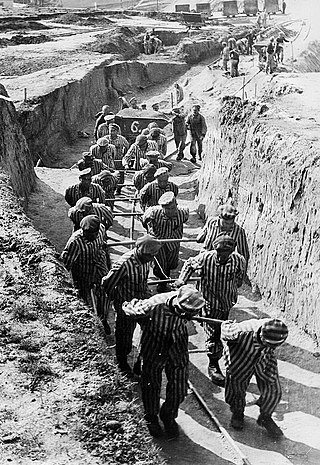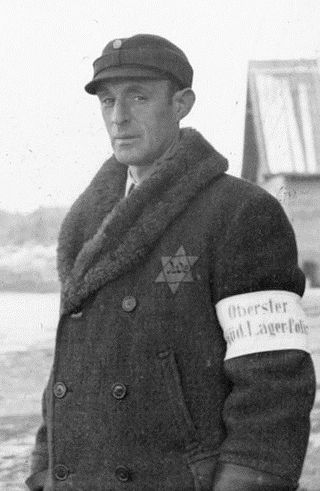
![Roll call at Melk concentration camp [de] Roll call at Melk concentration camp.jpg](http://upload.wikimedia.org/wikipedia/commons/thumb/f/f6/Roll_call_at_Melk_concentration_camp.jpg/220px-Roll_call_at_Melk_concentration_camp.jpg)

Appellplatz (often spelt appelplatz) is a compound German word meaning "roll call" ( Appell ) and "area" or "place" ( Platz ). In English, the word is generally used to describe the location for the daily roll calls in Nazi concentration camps.

![Roll call at Melk concentration camp [de] Roll call at Melk concentration camp.jpg](http://upload.wikimedia.org/wikipedia/commons/thumb/f/f6/Roll_call_at_Melk_concentration_camp.jpg/220px-Roll_call_at_Melk_concentration_camp.jpg)

Appellplatz (often spelt appelplatz) is a compound German word meaning "roll call" ( Appell ) and "area" or "place" ( Platz ). In English, the word is generally used to describe the location for the daily roll calls in Nazi concentration camps.
Roll calls were a key component of the daily regimen in Nazi concentration camps, carried out to count the prisoners but also to inspect, humiliate, weaken and intimidate them.
All prisoners were made to line up in rows and be counted very early in the morning and again at night. Even the bodies of those who had died since the previous roll call had to be brought to the Appellplatz to be counted. Roll calls were held year round no matter the weather, be it driving snow, pouring rain or extreme temperatures. Prisoners were made to stand at attention the entire time it took to count thousands of prisoners, which had to be done more than once if a mistake were made. Some prisoners died during or shortly after the roll calls. Harsh disciplinary measures, including beatings and death, were taken against anyone who was late to or who did not remain perfectly still during roll calls.
Selektions were sometimes made during roll calls; [1] prisoners would be looked over, and those deemed unhealthy or too weak to work were killed. [2] [3]



Nazi concentration camp badges, primarily triangles, were part of the system of identification in German camps. They were used in the concentration camps in the German-occupied countries to identify the reason the prisoners had been placed there. The triangles were made of fabric and were sewn on jackets and trousers of the prisoners. These mandatory badges of shame had specific meanings indicated by their colour and shape. Such emblems helped guards assign tasks to the detainees. For example, a guard at a glance could see if someone was a convicted criminal and thus likely of a tough temperament suitable for kapo duty.

Stutthof was a Nazi concentration camp established by Nazi Germany in a secluded, marshy, and wooded area near the village of Stutthof 34 km (21 mi) east of the city of Danzig (Gdańsk) in the territory of the German-annexed Free City of Danzig. The camp was set up around existing structures after the invasion of Poland in World War II and initially used for the imprisonment of Polish leaders and intelligentsia. The actual barracks were built the following year by prisoners. Most of the infrastructure of the concentration camp was either destroyed or dismantled shortly after the war. In 1962, the former concentration camp with its remaining structures, was turned into a memorial museum.


Mittelbau-Dora was a Nazi concentration camp located five miles from the town center of Nordhausen in Thuringia, Germany. It was established in late summer 1943 as a subcamp of Buchenwald concentration camp, supplying slave labour from many Eastern countries occupied by Germany, for extending the nearby tunnels in the Kohnstein and for manufacturing the V-2 rocket and the V-1 flying bomb. In the summer of 1944, Mittelbau became an independent concentration camp with numerous subcamps of its own. In 1945, most of the surviving inmates were sent on death marches or crammed in trains of box-cars by the SS. On 11 April 1945, US troops freed the remaining prisoners.

From 1933 to 1945, Nazi Germany operated more than a thousand concentration camps, including subcamps on its own territory and in parts of German-occupied Europe.


Fort Breendonk is a former military installation at Breendonk, near Mechelen, in Belgium which served as a Nazi prison camp (Auffanglager) during the German occupation of Belgium during World War II.

A kapo or prisoner functionary was a prisoner in a Nazi camp who was assigned by the Schutzstaffel (SS) guards to supervise forced labor or carry out administrative tasks.

Muselmann was a term used amongst prisoners of German Nazi concentration camps during the Holocaust of World War II to refer to those suffering from a combination of starvation and exhaustion, as well as those who were resigned to their impending death. The Muselmann prisoners exhibited severe emaciation and physical weakness, an apathetic listlessness regarding their own fate, and unresponsiveness to their surroundings owing to their barbaric treatment.

Extermination through labour is a term that was adopted to describe forced labor in Nazi concentration camps in light of the high mortality rate and poor conditions; in some camps a majority of prisoners died within a few months. In the 21st century, research has questioned whether there was a general policy of extermination through labor in the Nazi concentration camp system because of widely varying conditions between camps. German historian Jens-Christian Wagner argues that the camp system involved the exploitation of forced labor of some prisoners and the systematic murder of others, especially Jews, with only limited overlap between these two groups.
Gert Schramm was a survivor of Buchenwald concentration camp, where he was the youngest of six black prisoners. He was the son of a German woman and an African-American father and was arrested in violation of Nazi racial purity laws.

The Postenpflicht was a general order issued to SS-Totenkopfverbände guards in Nazi concentration camps to summarily execute insubordinate prisoners. The order required guards to shoot prisoners who engaged in resistance or escape attempts, without warning; failing to do so would result in dismissal or arrest. The Postenpflicht was originally issued on October 1, 1933, for guards at Dachau concentration camp, but was later extended to other concentration camps.

The Mühlviertler Hasenjagd was a war crime in which 500 Soviet officers, who had revolted and escaped from the Mühlviertel subcamp of Mauthausen-Gusen concentration camp on 2 February 1945, were hunted down. Local civilians, soldiers and local Nazi organizations hunted down the escapees for three weeks, summarily executing most of them. Of the original 500 prisoners who took part in the escape attempt, eleven succeeded in remaining free until the end of the war. It was the largest escape in the history of the Nazi concentration camps.

The Concentration Camps Inspectorate (CCI) or in German, IKL was the central SS administrative and managerial authority for the concentration camps of the Third Reich. Created by Theodor Eicke, it was originally known as the "General Inspection of the Enhanced SS-Totenkopfstandarten", after Eicke's position in the SS. It was later integrated into the SS Main Economic and Administrative Office as "Amt D".

Action 14f13, also called Sonderbehandlung14f13 and Aktion 14f13, was a campaign by Nazi Germany to murder Nazi concentration camp prisoners. As part of the campaign, also called invalid or prisoner euthanasia, the sick, the elderly and those prisoners who were no longer deemed fit for work were separated from the rest of the prisoners during a selection process, after which they were murdered. The Nazi campaign was in operation from 1941 to 1944 and later covered other groups of concentration camp prisoners.
The Sanitätswesen was one of the five divisions of a Nazi concentration or extermination camp organization during the Holocaust. The other divisions were the command center, the administration department, the Politische Abteilung and the protective detention camp.

Kemna concentration camp was one of the early Nazi concentration camps, created by the Third Reich to incarcerate their political opponents after the Nazi Party first seized power in 1933. The camp was established in a former factory on the Wupper river in the Kemna neighborhood of the Barmen quarter of Wuppertal. It was run by the SA group in Düsseldorf.

Gusen was a subcamp of Mauthausen concentration camp operated by the SS between the villages of Sankt Georgen an der Gusen and Langestein in the Reichsgau Ostmark. Primarily populated by Polish prisoners, there were also large numbers of Spanish Republicans, Soviet citizens, and Italians. Initially, prisoners worked in nearby quarries, producing granite which was sold by the SS company DEST.